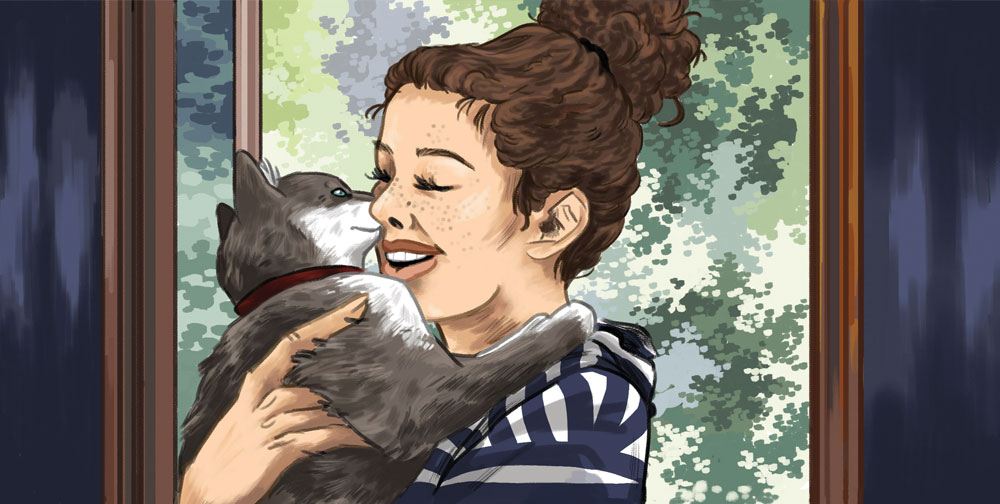Have you ever wondered if your cat truly loves you? Cats have their unique ways of showing affection, and it can sometimes be challenging to decipher their feelings. In this article, we have prepared a quiz to help you determine just how much your feline companion adores you. So, let’s get started and find out if your cat is head over paws for you!
Does Your Cat Approach You for Affection?
- Always! (score 5)
- Most of the time. (score 4)
- If he feels like it (like if there’s nothing better happening or I have a really tasty treat in hand). (score 3)
- Rarely. (score 2)
- Never. (score 1)
When Your Cat Sits Near You, Does She Ever Face Away from You?
- All the time. (score 5)
- Occasionally. (score 4)
- Only when she doesn’t realize I’m in the room. (score 3)
- No way. Never. (score 2)
- I rarely see my cat. She’s always hiding. (score 1)
You’ve Been Away for the Weekend. You Return Home to Find Your Cat:
- Vocalizing and wending around your ankles. (score 5)
- Waiting by the door when you walk in, ready to follow you everywhere. (score 4)
- Totally relaxed, chilling on the couch. (score 3)
- Watching you from the upmost perch of the cat tree. (score 2)
- Your cat is nowhere to be found. She may be under the bed in the spare room. (score 1)
Does Your Cat Check in with You to See What You’re Up To?
- Totally! My cat is always seeking me out and checking in with me. (score 5)
- My cat is pretty good at checking in with me, though sometimes I have to call her name to get her attention. (score 4)
- If I have food, yes. If not, forget about it. (score 3)
- Nope! He’s too busy napping. (score 2)
- He might be watching me from under the couch. It’s hard to tell. (score 1)
Your Cat Is Sleeping Beside You on the Couch. She Is:
- Lying paws out, tummy exposed. (score 5)
- Headbutting you, asking to be pet. (score 4)
- Curled up relaxing. (score 3)
- Regarding you from the far end of the sofa. (score 2)
- You placed her on the couch but she immediately jumped down and hid under a piece of furniture. (score 1)
You’re Home. Your Cat Is:
- Practically lying on top of your head. (score 5)
- Sitting on the couch with you, but facing away from you. (score 4)
- Lying on the adjacent couch. (score 3)
- Watching you from across the living room. (score 2)
- Hiding in another room. (score 1)
Does Your Cat Enjoy Being Handled by You?
- Of course, because my cat can’t get close enough to me. (score 5)
- Absolutely! My cat loves to be pet on her own terms. (score 4)
- My cat is pretty into it unless there’s something better happening. (score 3)
- No way, hates it. (score 2)
- Not sure, I’m afraid I’ll lose a finger. (score 1)
If You Hide, Does Your Cat Look for You?
- Absolutely! My cat wants to be right where I am…in the kitchen, in the bathroom with me. Forget about solo time! (score 5)
- Yep! She’ll put forth an effort to see where I went. (score 4)
- Her eyes might follow me for a moment or two before she goes back to napping. (score 3)
- Are you kidding? She’s more relaxed when she has the place to herself. (score 2)
- I’m pretty certain my cat only shows her face when no one is home. (score 1)
Answers: Now Tally Up Your Points!
The total score will help you understand the bond you share with your cat. Here’s what the scores mean:
33-40 Your Cat is very bonded to you and not afraid to show it!
You’ve done a terrific job of making your cat feel relaxed, loved, and confident, and your cat clearly loooooves spending time with you. Your cat trusts you, enjoys your company, and knows that good things happen when you’re around. Congrats on understanding your cat and giving her what she needs to feel at home and happy. This outgoing cat is likely naturally affectionate by nature, which, in a safe, loving, cat-friendly environment like the one you’ve created, results in a happy, lovey cat likely to engage in social behaviors that create social bonding.
25-32 Your Cat is bonded to a high degree, but is not the super touchy-feely cat.
Your cat still feels socially close to you, but is more the strong, silent type. Even though slightly less affectionate by nature (this cat will likely never be draped across your shoulder), your cat is still just as bonded to you as any cat can be. That said, this bond can usually be improved upon with activities to get your cat used to more physical affection and interactions with you.
17-24 Somewhat bonded, but not as bonded as they could be.
Your bond needs some work, but there is definitely a connection. This cat may dish out friendly behavior but on his own terms when he feels like it. Spend more focused time with your cat (i.e., playing and engaging your cat, not just watching Netflix together). Work on spending quality time with your cat and doing things he loves, and you will see your bond strengthen!
10-16 Not bonded yet.
Your cat can take you or leave you, as long as you feed him. You are not considered a preferred associate, or your cat may even be wary of you. There is still hope. Some cats just need more time with their owner and more bonding activities that build trust, like playtime, grooming, petting, and positive interactions. Never discipline a cat, as this can break the bond and hinder a bond from forming. Some cats are by nature more timid and fearful or are in environments that are too chaotic. This can get in the way of bonding, and you may need to adjust expectations for these cats.
Under 9 This Cat is scared and feels unsafe.
You need to start from the beginning, giving your cat a small, safe space to call her own, as you would when introducing a new cat to your household. Spend some time just quietly sitting in proximity to your cat and let her get comfortable with you on her own time. Don’t force her to come to you. Give her time to get acquainted. Pheromone therapy can also help. If you have a multi-cat home, territory issues could be at play; make sure there are enough resources, like litter boxes and towers, to promote timesharing. You may need to consult a feline behaviorist to help you encourage your scared cat to feel at home with you.
How to Improve Your Bond With Your Cat
Building a strong bond with your cat takes time and effort. Here are some tips to improve your relationship:
- Make sure good things happen in your presence—think tasty treats and playtime. Schedule multiple play sessions with your cat each day.
- Daily grooming sessions are a great way to relax, check-in with your cat and get them used to being handled by you.
- Consider using pheromone therapy to help your cat feel more relaxed and friendly.
- Create an environment that suits your cat’s needs with perches offering vertical space, engaging toys, and well-situated litter boxes.
By following these suggestions, you can strengthen your bond with your cat and create a loving and harmonious relationship.
Frequently Asked Questions
How can I tell if my cat loves me?
- Look out for signs of affection such as approaching you for attention, sleeping beside you, and seeking your presence.
Can a cat bond with more than one person?
- Yes, cats can form strong bonds with multiple people in their lives.
How long does it take for a cat to bond with its owner?
- Bonding times vary for each cat. Some may form strong bonds quickly, while others may take more time.
How can I build trust with an anxious cat?
- Provide a safe and calm environment, spend quiet time together, and offer positive experiences such as treats and gentle petting.
Is it possible for a cat to not bond with its owner?
- While it’s uncommon, some cats may not form strong bonds due to past experiences or individual personalities.
Conclusion
Understanding the bond between you and your cat is essential for building a healthy relationship. By taking the quiz and following the tips provided, you can strengthen your bond and create a loving connection with your feline companion. Remember, every cat is unique, and patience and understanding are key to nurturing a strong and lasting bond. For more helpful articles and information about cats, visit Pawsoha.

